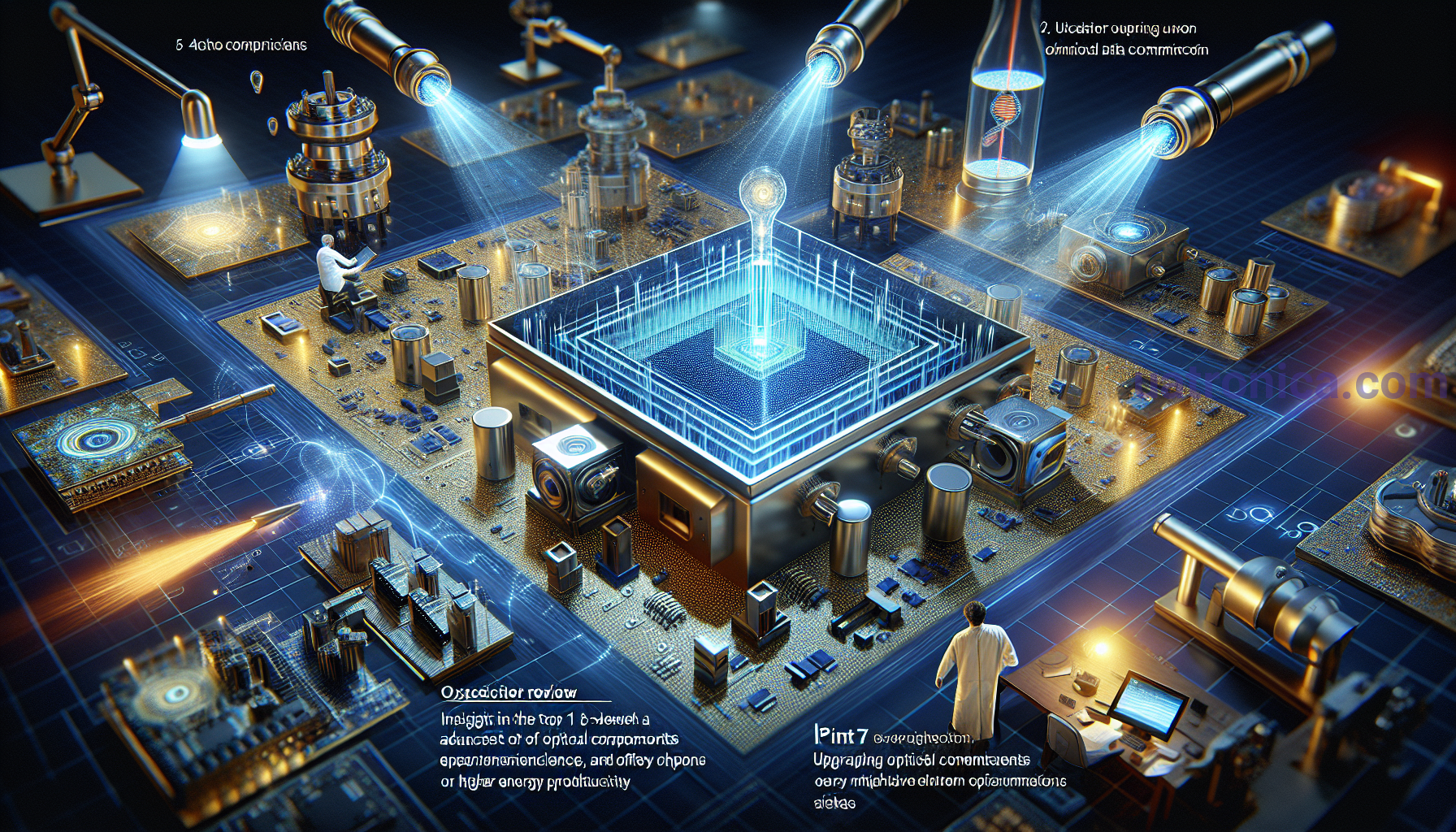A review of 15 of the latest scientific advances in the world of semiconductors: the future of electronics in detail
In the world of semiconductors, new research and advances are constantly happening that affect the future of electronics. The latest semiconductors are materials that have special electrophysical properties and are used in the production of electronic components. This review presents 15 of the most exciting scientific advances in the world of semiconductors that could change the future of electronic technology.
1. Advances in the field of quantum dots
Quantum dots are nanoparticles of semiconductor materials with unique properties. Scientists have developed new methods of synthesizing quantum dots with high density and stability. This discovery could lead to brighter and more efficient displays, solar cells and quantum computers.
2. Transition to monoatomic transistors
Transistors are the basic building blocks of electronic technology. Scientists are currently working on the development of single-atom transistors that will provide higher performance and energy efficiency compared to traditional transistors. It could revolutionize the field of computing technology and artificial intelligence.
3. Development of quantum computing
Quantum computing is a new type of computing based on the principles of quantum mechanics. Scientists are working on the development of quantum computers that can solve complex problems that traditional computers simply get stuck on. It could change the approach to data encryption, molecular modeling and artificial intelligence.
4. Ferroelectric transistors
Ferroelectric materials have the ability to maintain a state for a long time without external power. Scientists are working on the development of ferroelectric transistors, which can be used to create energy-efficient memories and electronic devices with high miniaturization.
5. Tunnel transistors
Tunnel transistors are transistors based on the effect of quantum passage of a particle through a barrier that would normally prevent it from entering. Such transistors can operate at high frequencies and reduce power consumption. They are already used in advanced chips, but are constantly being improved to improve performance.
6. Use of two-dimensional materials
Recently, scientists have discovered two-dimensional materials such as graphene, molecules and other structures formed from a single layer of atoms. These materials have unique electrophysical properties that can be used to create new sensors, displays and energy devices. Two-dimensional materials have great potential that has not yet been fully realized.

7. Development of optical components
Optical components that work on the basis of photons are used in quantum communication, optical networks and other fields. Scientists are working on developing optical components with higher performance and energy efficiency. Improvements in optical components can lead to significant increases in data transfer rates and improved performance of optical devices.
8. Use of mass surveillance technology
Mass observation technology is a method of growing semiconductor crystals from a large number of small crystals. This makes it possible to obtain semiconductors of large size with high quality and structure uniformity. The use of this technology makes it possible to reduce costs for the production of semiconductor components and improve their quality.
9. Use of molecular properties
Molecular properties can be used to create new types of electronic components. For example, systems that can change their structure by changing molecular bonding can be used to create programmable logic circuits and resettable memories.
10. Use of hybrid materials
Hybrid materials combine different types of semiconductors with different physical properties. The use of hybrid materials allows you to combine the advantages of different materials and create electronic components with new functions and capabilities.
11. Development of energy-efficient electronic components
Energy efficiency is an important aspect of modern electronic technology. Scientists are working on the development of energy-efficient transistors, memories and other components that allow to reduce electricity consumption and increase the life of batteries of electronic devices.
12. Use of high-speed semiconductor components
Semiconductor components with a high response speed are used in modern telecommunications technology, computing systems and other high-performance devices. Scientists continue to develop new methods and materials to create even faster semiconductor components.
13. Development of ultrathin semiconductor materials
Ultrathin semiconductor materials are only a few atoms thick. This allows to create electronic components with high spatial miniaturization and efficiency. Ultra-thin materials can be used to create ultra-fast transistors, memories and other components that occupy a minimal volume.

14. Separation of electrons and holes
The separation of electrons and holes is the process of exciting electrons in a semiconductor and their transition to a higher energy level, creating so-called "holes". Scientists are investigating new methods of separating electrons and holes in order to improve the efficiency of electronic devices and improve the performance of electronics in general.
15. Development of nanolithography
Nanolithography is a method of creating microcircuits with very high spatial resolution. Scientists are conducting research to improve nanolithography methods to produce even more miniature electronic components.
These are just some of the most exciting scientific achievements in the world of semiconductors. The latter, in the case of practical use, can help improve the performance of various electronic devices, including computers, smartphones, televisions and many others. These latest scientific advances open many possibilities for the future of electronics and build the foundation for the further development of this field.
Conclusion
In the world of semiconductors, new research and advances are constantly taking place that have a significant impact on electronics. The latest semiconductors, such as quantum dots, single-atom transistors, quantum computing and many others, open many possibilities for the creation of new electronic components and systems.
These new scientific advances open many possibilities for future robots and technologies. They can improve the energy efficiency, performance and functionality of electronics. At the same time, they remain scientific and research achievements that require further research and development for practical application.
Ascent of the incredible
In the field of semiconductors, they are constantly moving forward, making the impossible possible. One example of such an ascent to the sky is the product RC0603FR-071K07L-YAG. This is a great example of how the latest semiconductors make it possible to get reliable and productive components. RC0603FR-071K07L-YAG is a resistor that meets the highest standards of quality and reliability. Used in various electronic devices, it ensures stable and accurate operation.
Another example of a revolutionary product is the 5TG1682 Siemens. This innovative product meets all the needs of modern electronics. The Siemens 5TG1682 is a switch that provides stable and efficient switching of electrical signals. Used in all electronics industries, this product is an essential component in any government system.
With these innovative products and many other recent scientific advances, semiconductors are playing a leading role in the development of electronic technology.
What about you, what is between the ears?










